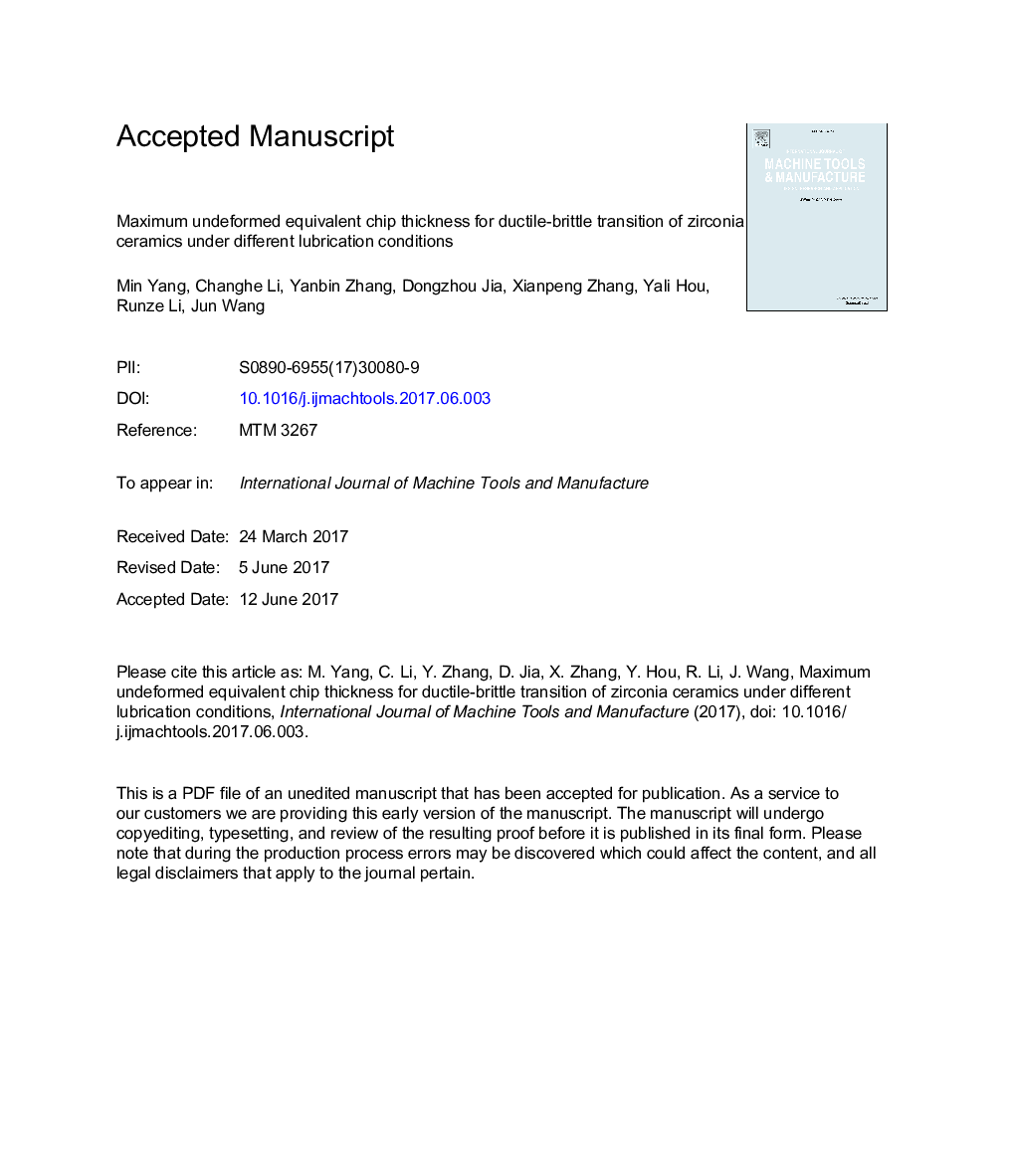| Article ID | Journal | Published Year | Pages | File Type |
|---|---|---|---|---|
| 5015696 | International Journal of Machine Tools and Manufacture | 2017 | 29 Pages |
Abstract
This study investigates the critical maximum undeformed equivalent chip thickness for ductile-brittle transition (DBhmax-e) of zirconia ceramics under different lubrication conditions. A DBhmax-e model is developed through geometry and kinematics analyses of ductile-mode grinding. Result shows that DBhmax-e decreases with increasing friction coefficient (μ). An experimental investigation is then conducted to validate the model and determine the effect of dry lubrication, minimum quantity lubrication (MQL), and nanoparticle jet minimum quantity lubrication (NJMQL) conditions on DBhmax-e. According to different formation mechanisms of debris, the grinding behavior of zirconia ceramics is categorized into elastic sliding friction, plastic removal, powder removal, and brittle removal. Grinding forces per unit undeformed chip thickness (Fn/h and Ft/h) are obtained. The lubrication condition affects the normal force and ultimately influences the resultant force on workpiece. In comparison with dry grinding (DBhmax-e = 0.8 μm), MQL and NJMQL grinding processes increase DBhmax-e by 0.99 and 1.79 μm respectively; this finding is similar to model result. The theoretical model is then assessed by different volume fractions of nanofluids under NJMQL condition with an average percentage error of less than 8.6%.
Related Topics
Physical Sciences and Engineering
Engineering
Industrial and Manufacturing Engineering
Authors
Min Yang, Changhe Li, Yanbin Zhang, Dongzhou Jia, Xianpeng Zhang, Yali Hou, Runze Li, Jun Wang,
